Barcelona
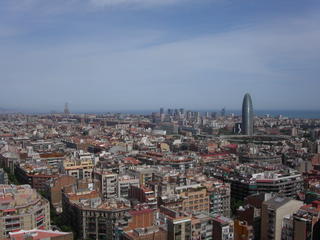 Barcelona, located at the Mediterranean sea in the very north of the Spanish coast, is certainly the most cosmopolitan and economically most active city in Spain. It has always proved its will to be modern. To the tourist this is evident specially in its architecture, but Barcelona has an old history, and there are monuments of Romanesque, Gothic and Renaissance periods.
Barcelona, located at the Mediterranean sea in the very north of the Spanish coast, is certainly the most cosmopolitan and economically most active city in Spain. It has always proved its will to be modern. To the tourist this is evident specially in its architecture, but Barcelona has an old history, and there are monuments of Romanesque, Gothic and Renaissance periods.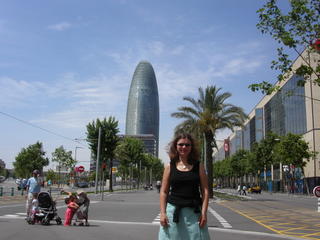 Torre Agbar: Agbar Tower was designed by Jean Nouvel. The glass covered building was intended to be like a mirage, reflecting the water, the mountains and the urban fabric of the city. But, it looks more like missile. Locals call this interesting building "the suppository."
Torre Agbar: Agbar Tower was designed by Jean Nouvel. The glass covered building was intended to be like a mirage, reflecting the water, the mountains and the urban fabric of the city. But, it looks more like missile. Locals call this interesting building "the suppository."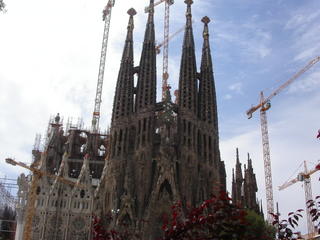 Sagrada Familia: Gaudí's incomplete masterpiece is one of the city's more idiosyncratic creations. Construction of the Catedral started in 1882, and it is estimated that the whole thing will be completed by 2026. The project is funded entirely by visitors and private donations.
Sagrada Familia: Gaudí's incomplete masterpiece is one of the city's more idiosyncratic creations. Construction of the Catedral started in 1882, and it is estimated that the whole thing will be completed by 2026. The project is funded entirely by visitors and private donations.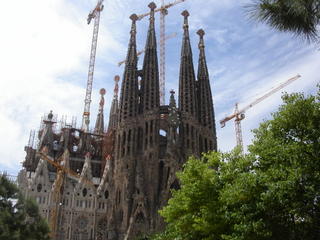 In 1936 anarchists attacked the church destroying the plans and models Gaudí had left behind. Withoout blueprints, the present architects are trying to complete the cathedral by guessing what Gaudi wanted to do. Consequently, the building shows the contrasts.
In 1936 anarchists attacked the church destroying the plans and models Gaudí had left behind. Withoout blueprints, the present architects are trying to complete the cathedral by guessing what Gaudi wanted to do. Consequently, the building shows the contrasts. 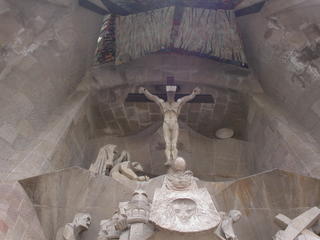 Sagrada Familia: The Passion Facade of the Cathedral displays Josep M. Subirachs' work, with stylized and enlogated figures, Christ's passion and death, from last supper to the crucifixion.
Sagrada Familia: The Passion Facade of the Cathedral displays Josep M. Subirachs' work, with stylized and enlogated figures, Christ's passion and death, from last supper to the crucifixion. The Templode la Sagrada Familia: After climbing what seemed to be an endless very narrow stairs, we reached the top of the Cathedral that rewards us with amazing views of Barcelona and the Mediterranean.
The Templode la Sagrada Familia: After climbing what seemed to be an endless very narrow stairs, we reached the top of the Cathedral that rewards us with amazing views of Barcelona and the Mediterranean.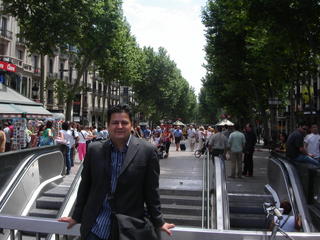 Las Ramblas is often referred to as the heart and soul of Barcelona, running from the Barcelona Harbor to Catalunya Square. The Ramblas is close to the Harbor and Gothic Quarter, and here you can find tons of shops, restaurants, hotels and people.
Las Ramblas is often referred to as the heart and soul of Barcelona, running from the Barcelona Harbor to Catalunya Square. The Ramblas is close to the Harbor and Gothic Quarter, and here you can find tons of shops, restaurants, hotels and people.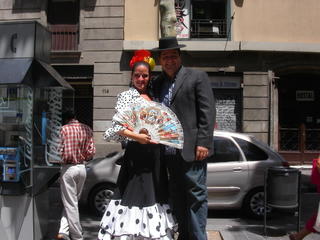 Living statues populate the Ramblas. They are very creative. If you throw a couple euros in a container next to them, they are more than pleased to pose with you for a picture.
Living statues populate the Ramblas. They are very creative. If you throw a couple euros in a container next to them, they are more than pleased to pose with you for a picture.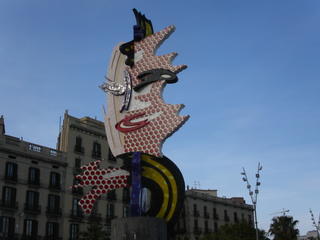 This is one of many modern sculptures you might encounter in a walk around Barcelona Harbor's waterfront.
This is one of many modern sculptures you might encounter in a walk around Barcelona Harbor's waterfront.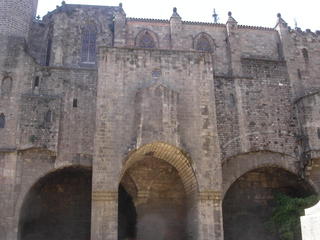 Catedral de Barcelona: Barcelona's cathedral is a celebrated example of Catalan Gothic architecture. Its spires can be seen from almost all over the Barri Gòtic and the large square upon which it resides, the Plaça de la Seu. Construction on the cathedral began at the end of the 13th century, and work was finally completed in the mid-15th century.
Catedral de Barcelona: Barcelona's cathedral is a celebrated example of Catalan Gothic architecture. Its spires can be seen from almost all over the Barri Gòtic and the large square upon which it resides, the Plaça de la Seu. Construction on the cathedral began at the end of the 13th century, and work was finally completed in the mid-15th century. Barri Gòtic: The Gothic Quarter is made up of 13th- to 15th-century buildings (or parts of) that still remain. These include government buildings, churches, and guild houses.
Barri Gòtic: The Gothic Quarter is made up of 13th- to 15th-century buildings (or parts of) that still remain. These include government buildings, churches, and guild houses.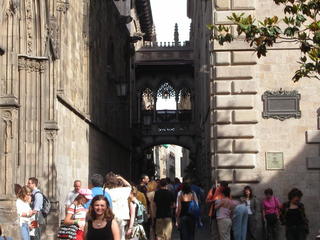 The Barri Gòtic's charm lies in its details. Gargoyles peering down from ancient towers and small chapels set into the sides of medieval buildings is what makes the area so fascinating.
The Barri Gòtic's charm lies in its details. Gargoyles peering down from ancient towers and small chapels set into the sides of medieval buildings is what makes the area so fascinating.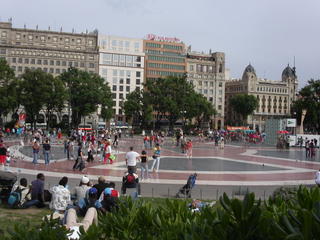 Placa de Catalunya is a major square in the heart of the Bari Gotic area of the city. The square is a popular meeting point. The square is sorrounded by some of the large department stores.
Placa de Catalunya is a major square in the heart of the Bari Gotic area of the city. The square is a popular meeting point. The square is sorrounded by some of the large department stores.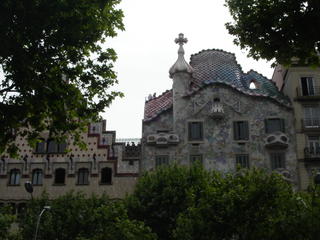 Casa Batlló: Next door to the Casa Amatller, Casa Batlló was designed by Gaudí in 1905 and is hands-down the superior of the three works in the manzana.
Casa Batlló: Next door to the Casa Amatller, Casa Batlló was designed by Gaudí in 1905 and is hands-down the superior of the three works in the manzana.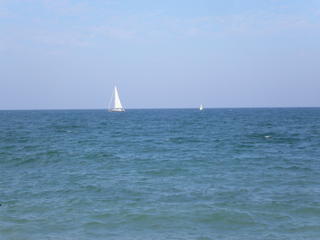 Barcelona's waterfront at the Mediterranean Sea.
Barcelona's waterfront at the Mediterranean Sea. Sara getting ready to go into the Mediterranean.
Sara getting ready to go into the Mediterranean.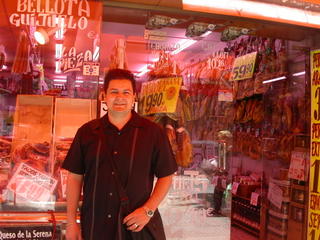 Since Spain loves ham, we needed to get a picture of ham store. It is amazaing the great variety of hams and sausages available.
Since Spain loves ham, we needed to get a picture of ham store. It is amazaing the great variety of hams and sausages available.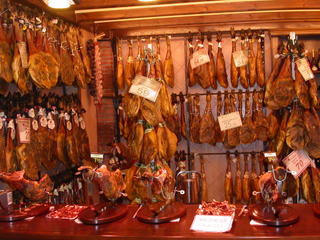
Here are some choices of Spanish hams: Jamon Iberico, Jamon Iberico de bellota, Jamon the Huelva, Jamon Serrano, Salchichon, Lomo, Chorizo and a few more.
No comments:
Post a Comment